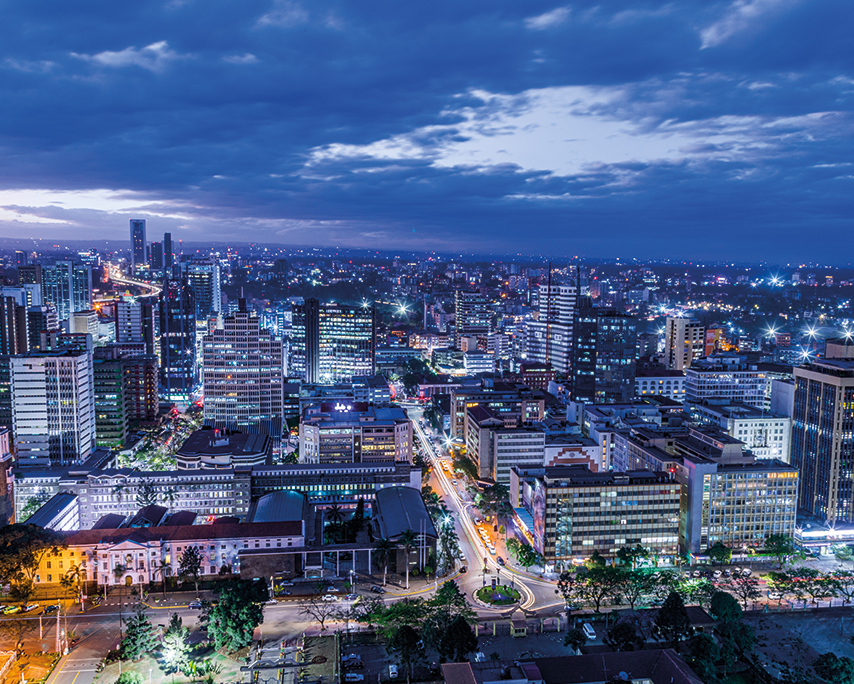Twilight in Nairobi, Kenya.
Photo Credit: Anthony Trivet Photography/Getty Images
World Habitat Day
Documenting urban transformation through photography
Across Africa, towns and cities are undergoing rapid transformation. Populations are growing, infrastructure is expanding, and urban life is evolving at a pace that outstrips many planning processes. While this growth brings opportunities, it also presents challenges of overcrowding, informal housing, strained services, and fragile infrastructure. Capturing these realities through photography is not just an artistic exercise, but a way of documenting change, informing policy, and supporting more effective responses to the continent’s urban crises.
Understanding today’s African cities
Africa’s urban centres are diverse and dynamic. Some cities are hubs of innovation and modern design, while others struggle with persistent problems such as traffic congestion, inadequate sanitation, or housing shortages. Many include both extremes within the same landscape, gleaming high-rises next to sprawling informal settlements. These contrasts are part of the broader story of urbanisation, where development often outpaces planning and regulation.
The role of photography
Photography offers a visual record of how cities are changing. Images can highlight both progress and gaps in urban development. For instance, a photograph of new public transport systems alongside overcrowded informal minibuses tells a story of transition. Similarly, documenting neighbourhoods where residents have organised to improve drainage or waste collection can reveal community-driven solutions that benefit the entire community.
Unlike statistics or policy papers, photographs capture lived realities in a way that is immediate and relatable. They can shape how policymakers, planners, and the public understand urban life. In this sense, photography becomes a crucial tool not only for raising awareness but also for promoting accountability and transparency.
Linking photography to urban crisis response
Urban crises in Africa range from flooding and droughts to housing collapses and public health emergencies. Many of these crises are linked to rapid and unplanned urbanisation. When storms overwhelm drainage systems or when informal housing is vulnerable to fire, the result is not just disruption but loss of lives and livelihoods.
Photography can play a crucial role in crisis response by providing real-time evidence of conditions on the ground. Documenting affected areas enables humanitarian organisations and governments to prioritise resources and target interventions more effectively. Visual records of damaged infrastructure or displaced communities can also inform future urban planning, reducing vulnerabilities and preparing cities for similar events.
Photography also creates a neutral space where multiple perspectives, those of planners, policymakers, community members, and international actors, can converge. By presenting images that showcase both achievements and challenges, photography avoids relying solely on abstract debates. It grounds discussions in concrete realities that everyone can see and interpret, even if their conclusions differ.
The need for better documentation of African cities is not only about crisis but also about long-term resilience. As governments and organisations push for sustainable urbanisation, evidence-based planning is essential. Habitat photography, or more broadly, urban photography, becomes a way of creating this evidence base. It shows not just buildings and roads, but also how people inhabit, adapt, and transform their spaces.
On occasions like World Habitat Day, reflecting on the state of towns and cities in Africa reminds us of both the opportunities and the challenges of urban growth. Photography provides a lens through which to understand these dynamics. It supports crisis response, informs policy, and ensures that urban development reflects the realities of those who live in rapidly changing environments.



